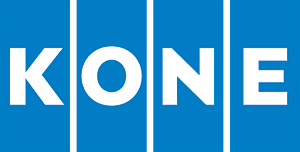Now under construction and scheduled for delivery in the fall of 2008, the new office building at 1050 K Street is located on one of the most sought after pieces of undeveloped land in downtown Washington, D.C. The 136,000 sq ft, 11-story office block with ground-level retail and parking below is designed to be LEED Gold Certified. The building has four 500-feet-per-minute Machine Room-Less elevators (MRLs), two on each side of the lobby.
Chuong Cao, project designer, and Jason Wright, project architect, with Hickok Cole Architects, Washington, D.C, explained that there were two basic reasons why MRLs were specified rather than traditional traction elevators. The first reason is the energy savings of MRLs. Since the building is expected to achieve LEED certification, it was very important to have systems that promote energy savings. In this way, energy-efficient elevators would contribute to the overall energy savings of the building and therefore add to the prerequisite and credit requirements of LEED.
The second reason concerns building height requirements and the value of penthouse square footage. In the city of Washington D.C., the building height limit is 130 feet. A penthouse may be added that does not exceed 18 feet, 6 inches in height. Typically, it's tough to design a penthouse floor with elevator service using a traction system, says Chuong, because it requires a height overrun on the penthouse floor to accommodate the elevator and, on top of that, additional height for the machine room. (The height of the machine room is included in the permissible additional 18 feet, 6 inches.)
Since MRLs are energy efficient and require no machine room, they were a logical choice for 1050 K, as the building is known. The controllers for each bank of elevators will be located in a closet next to the hoistway on the penthouse floor.
The owner is excited about the technology used by MRLs, reports Chuong. Even though it is not new, it is fairly new to the Washington area and not a lot of buildings have them. For this reason -and the fact that DC has not fully adopted the latest national ASME elevator code-it is taking some additional time for the authority that issues building permits to incorporate the new technology into its approval process, especially given the code requirement for access to the elevator machine room because there is no longer a true machine room.
The interior of the lobby is a gallery of photographs with one side finished in glass and the other side finished in wood. The two cab interiors on each side continue the finishes, so that when the elevator doors open, the entire walls on each side appear as glass or wood. In order to ensure that the weight of the finished cab interiors met requirements, the architects worked closely with the elevator manufacturer to determine which thickness of glass should be specified.










